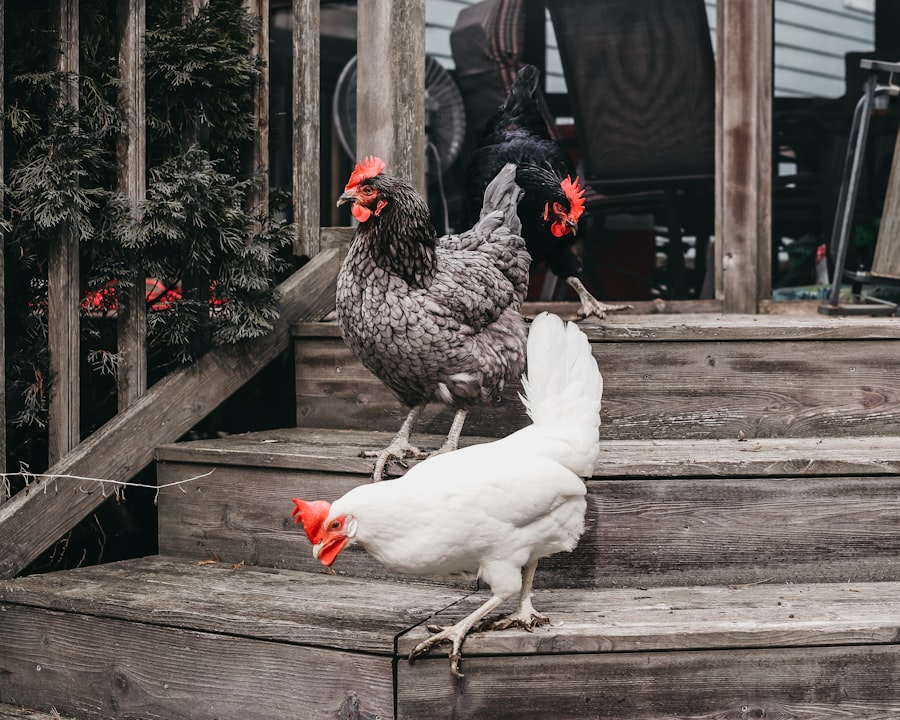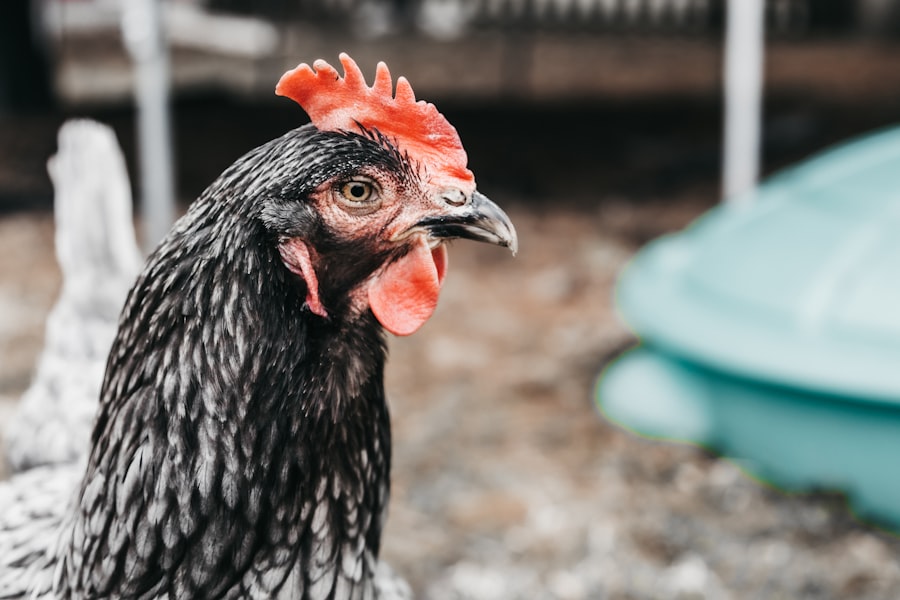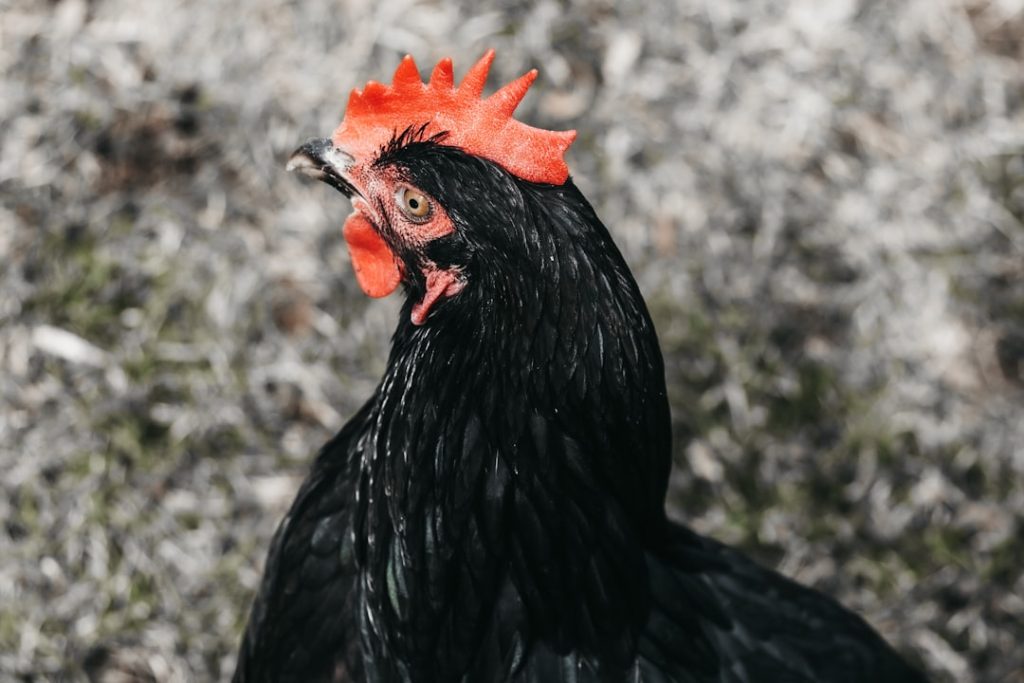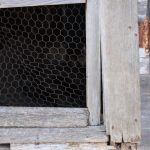Foxes are natural predators of chickens and pose a significant threat to poultry. These cunning and agile animals are known for their ability to infiltrate chicken coops and capture birds, causing losses for poultry owners. Foxes are most active during dawn and dusk, making them a persistent danger to free-range chickens.
Their hunting instincts and acute sense of smell make them formidable adversaries for chicken keepers. Foxes are highly intelligent and can exploit small openings or weaknesses in chicken enclosures. They employ stealthy and strategic hunting techniques, which chickens struggle to defend against.
Foxes are also known for their persistence in seeking food, making them a constant threat to chicken safety. Understanding fox behavior and capabilities is essential for developing effective protection strategies for poultry. By recognizing the risks posed by foxes, chicken owners can implement proactive measures to secure their coops and safeguard their flocks.
Table of Contents
- 1 Securing the Chicken Coop: Building a Fox-Proof Enclosure
- 2 Implementing Deterrents: Using Scent and Sound to Keep Foxes Away
- 3 Utilizing Predator-Proof Fencing: Creating a Barrier to Keep Foxes Out
- 4 Nighttime Protection: Ensuring the Safety of Chickens during the Night
- 5 Removing Attractants: Keeping Food and Waste Secure from Foxes
- 6 Monitoring and Maintenance: Regularly Inspecting and Updating Defenses against Foxes
- 7 FAQs
- 7.1 What are some effective methods for keeping foxes away from chickens?
- 7.2 What type of fencing is best for keeping foxes out of a chicken coop?
- 7.3 Are there any natural deterrents for foxes that can be used to protect chickens?
- 7.4 How can motion-activated lights or sprinklers help keep foxes away from chickens?
- 7.5 What role can guard animals, such as dogs, play in protecting chickens from foxes?
Key Takeaways
- Foxes pose a significant threat to chickens and their safety.
- Building a fox-proof enclosure is essential for securing the chicken coop.
- Using scent and sound deterrents can help keep foxes away from the chicken coop.
- Predator-proof fencing is crucial for creating a barrier to keep foxes out.
- Ensuring nighttime protection is important for the safety of chickens, as foxes are more active at night.
Securing the Chicken Coop: Building a Fox-Proof Enclosure
Designing a Secure Coop
Building a fox-proof enclosure is essential for protecting chickens from the threat of foxes. This involves constructing a sturdy and secure coop that is designed to keep foxes out and prevent them from gaining access to the chickens. The enclosure should be built with strong materials and reinforced with wire mesh to prevent foxes from breaking in.
Maintenance and Inspection
It is important to inspect the coop regularly for any signs of wear and tear, and to make necessary repairs to ensure that it remains fox-proof. Regular maintenance is crucial to prevent foxes from finding vulnerabilities in the coop.
Layout and Placement Considerations
In addition to the physical structure of the coop, it is important to consider the layout and design of the enclosure. This includes ensuring that there are no gaps or openings that could allow foxes to enter the coop. It is also important to consider the placement of the coop in relation to other structures or natural features that could provide access points for foxes.
By carefully planning and constructing a fox-proof enclosure, chicken owners can create a safe and secure environment for their flock.
Implementing Deterrents: Using Scent and Sound to Keep Foxes Away

Implementing deterrents such as scent and sound can be an effective way to keep foxes away from the chicken coop. Foxes have a keen sense of smell, and certain scents can be used to deter them from approaching the coop. This can include using natural repellents such as predator urine or strong-smelling herbs and plants that are known to repel foxes.
By strategically placing these scents around the perimeter of the coop, chicken owners can create a barrier that discourages foxes from approaching. In addition to scent deterrents, sound can also be used to keep foxes away from the chicken coop. Foxes are known to be sensitive to loud noises, and certain sounds can be used to deter them from approaching the coop.
This can include using motion-activated devices that emit loud noises when they detect movement, or playing recordings of predator calls that are known to scare off foxes. By using a combination of scent and sound deterrents, chicken owners can create an effective barrier that keeps foxes at bay.
Utilizing Predator-Proof Fencing: Creating a Barrier to Keep Foxes Out
Utilizing predator-proof fencing is an essential part of protecting chickens from foxes. This involves installing a sturdy and secure fence around the perimeter of the coop that is designed to keep foxes out. The fence should be constructed with strong materials such as wire mesh or chain link, and should be buried at least a foot into the ground to prevent foxes from digging underneath it.
It is important to regularly inspect the fence for any signs of damage or weakness, and to make necessary repairs to ensure that it remains predator-proof. In addition to the physical structure of the fence, it is important to consider the height and design of the enclosure. The fence should be tall enough to prevent foxes from jumping over it, and should be angled outward at the top to further deter them from attempting to climb over.
By carefully planning and constructing a predator-proof fence, chicken owners can create a strong barrier that keeps foxes out and protects their flock from harm.
Nighttime Protection: Ensuring the Safety of Chickens during the Night
Ensuring the safety of chickens during the night is crucial for protecting them from foxes, as these predators are particularly active during the early morning and late evening hours. This involves securing the coop at night to prevent foxes from gaining access to the chickens while they are roosting. This can include installing secure latches and locks on all doors and windows, as well as reinforcing any weak spots in the enclosure that could provide access points for foxes.
In addition to securing the coop, it is important to consider the placement of lighting around the perimeter of the enclosure. Foxes are known to be wary of well-lit areas, and strategically placing lights around the coop can help deter them from approaching. Motion-activated lights can be particularly effective in scaring off foxes when they detect movement near the coop.
By implementing nighttime protection measures, chicken owners can create a secure environment for their flock and minimize the risk of fox attacks.
Removing Attractants: Keeping Food and Waste Secure from Foxes

Secure Food and Feed Storage
Foxes are drawn to sources of food, so it’s essential to store all food and feed in secure containers that are inaccessible to them. Clean up any spilled or leftover food to prevent attracting them.
Proper Waste Disposal
Properly dispose of chicken waste and litter to prevent odors that could attract foxes. This will help minimize the risk of attracting them to the coop.
Removing Other Attractants
Consider other potential attractants that could draw foxes towards the coop, such as nesting materials like straw or hay, water sources, or sheltered areas where foxes could hide. Store these items in secure containers and remove any other potential sources of attraction.
By removing these attractants, chicken owners can create a less appealing environment for foxes and minimize the risk of attracting them to the coop.
Monitoring and Maintenance: Regularly Inspecting and Updating Defenses against Foxes
Regularly monitoring and maintaining defenses against foxes is essential for ensuring the ongoing safety of chickens. This involves regularly inspecting the coop and perimeter for any signs of wear and tear, as well as making necessary repairs or updates to keep it secure. It is important to check for any potential weak spots in the enclosure that could provide access points for foxes, and to reinforce these areas as needed.
In addition to physical inspections, it is important to consider other measures such as updating scent deterrents or sound devices on a regular basis to ensure their effectiveness in keeping foxes away. This can include refreshing scent barriers or replacing batteries in motion-activated devices to maintain their functionality. By regularly monitoring and maintaining defenses against foxes, chicken owners can stay one step ahead of potential threats and ensure the ongoing safety of their flock.
In conclusion, protecting chickens from foxes requires a multi-faceted approach that involves understanding the threat posed by these predators, securing the coop with a fox-proof enclosure and predator-proof fencing, implementing deterrents such as scent and sound, ensuring nighttime protection, removing attractants, and regularly monitoring and maintaining defenses against foxes. By taking proactive measures to protect their flock, chicken owners can create a safe and secure environment that minimizes the risk of fox attacks and ensures the well-being of their chickens.
If you’re looking for ways to keep foxes from chickens, you may also be interested in learning about the importance of a proper floor for your chicken coop. Check out this article on the best flooring options for a chicken coop to ensure the safety and well-being of your flock.
FAQs
What are some effective methods for keeping foxes away from chickens?
Some effective methods for keeping foxes away from chickens include using secure fencing, installing motion-activated lights or sprinklers, using guard animals such as dogs, and keeping chickens in a secure coop at night.
What type of fencing is best for keeping foxes out of a chicken coop?
The best type of fencing for keeping foxes out of a chicken coop is hardware cloth or welded wire fencing with small openings (no larger than 1 inch) that extends at least 18 inches below the ground and 6 feet above the ground.
Are there any natural deterrents for foxes that can be used to protect chickens?
Some natural deterrents for foxes that can be used to protect chickens include spreading predator urine or using strong-smelling plants such as lavender or garlic around the chicken coop.
How can motion-activated lights or sprinklers help keep foxes away from chickens?
Motion-activated lights or sprinklers can startle and deter foxes from approaching the chicken coop, as they are sensitive to sudden movements and unexpected sounds.
What role can guard animals, such as dogs, play in protecting chickens from foxes?
Guard animals, such as dogs, can help protect chickens from foxes by patrolling the area and deterring potential predators through their presence and barking. It’s important to choose a breed that is known for its protective instincts and train the dog to coexist with the chickens.
Meet Walter, the feathered-friend fanatic of Florida! Nestled in the sunshine state, Walter struts through life with his feathered companions, clucking his way to happiness. With a coop that’s fancier than a five-star hotel, he’s the Don Juan of the chicken world. When he’s not teaching his hens to do the cha-cha, you’ll find him in a heated debate with his prized rooster, Sir Clucks-a-Lot. Walter’s poultry passion is no yolk; he’s the sunny-side-up guy you never knew you needed in your flock of friends!







